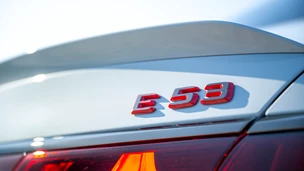I feel the need to establish some context here. For years I have marvelled at much of what Subaru has done, and in particular I have been delighted by the Forester. The first one I drove was an S-Turbo, with less outright performance than the equivalent Impreza of the time but an even better power/handling balance, and at the time it would have been difficult for me to name any car I would have preferred to drive hard along a deserted country road. The more powerful 2.5-litre XT I drove back in 2004 was perhaps a bit over the top, but in general I have loved every Forester I have ever driven. Just wanted to clear that up.My most recent Forester has been the one you see here, and the immediate difference between it and all the previous ones of my experience is that it has a turbo diesel engine. Subaru has only recently started selling diesel cars, the problem being that it felt unable to break away from its favoured flat-four (or flat-six) layout, in which two (or three) pistons sprout horizontally from each side of the crankcase rather than all four (or six) pointing vertically up from it.For various technical reasons which I'm sure we don't need to spend much time considering, this is harder to arrange in a diesel engine than in a petrol one, but the two-litre flat-four which has finally emerged is something of a marvel. At 145bhp its maximum output is only fractionally less than that of the 2.0 non-turbo petrol also available in the Forester range, but there is vastly more grunt at low engine speeds, and although the key performance figures are only slightly better there is a constant feeling that if you want acceleration you can have it, almost regardless of how slowly the engine is ticking over.That's as things should be with a diesel, of course, but in the Forester this unit is also very quiet. In fact I'm pretty sure (without going through the fuss and bother of actually checking this) that a present-day Forester diesel is quieter than any of the petrol-engined versions with the previous body shape.Foresters have never looked outstandingly attractive, and the new one is considerably bulkier than the original, but although it's hardly the Maria Sharapova of the SUV world it does have one feature which shouldn't be, but is, quite remarkable given the current state of the motor industry: all the pillars are of moderate dimension, there's plenty of glass area, and the upshot is that you can actually see out of the thing. I'd almost given up hope of any manufacturer being able to provide this simple service without legislation being introduced to demand it, but Subaru has apparently done so entirely of its own accord. Hurrah!You'll have guessed by now that I am as much a Forester fan as I ever was, and that I would like to buy this car. Unfortunately, you're wrong. There are two ways in which I consider the Forester unacceptable, and one of them is the gearchange. This has never been a Subaru strong point. The company has never built a car of which it could be said - as it was of, I think, Sunbeams in the 1920s - that the gearchange was like "a warm knife through the best butter", but in the Forester diesel it's like trying to break into a fridge with an axe. I believe there is talk within Subaru of improving the quality of the change, and if you ask me it can't happen soon enough.The other problem - and I can hardly believe I'm having to write this - is that the suspension isn't right. It seems right at low speeds, in that you can still feel the benefits of a low centre of gravity (caused by the flat-four engine layout, so you can now see why Subaru didn't want to abandon that), and there is still a sense that the suspension is soft and well-damped, which has been another ace in Subaru's hand for many years. In gentle driving the Forester feels great, and there is no suggestion that it will feel anything other than great when you start pushing harder.But I was barely even doing that when I came across a huge blunder in the set-up. I was exiting a roundabout and accelerating reasonably briskly on to the 70-limit dual-carriageway that followed. Halfway through the process, the Forester started to pitch diagonally in such a way that it was obvious the damping simply wasn't right. I could hardly believe it, but it happened again later the same day.How can this be? Subarus don't do that sort of thing. If so many of them in the past have handled in a way that is the envy of other manufacturers, why does this one have a flaw that does not affect any other modern SUV? This issue is at least as important as the one about the gearchange, and needs to be addressed just as quickly.Just for the sake of completeness, the XSn tested here is considerably the most expensive of the three diesels in the range. The most basic, called simply the 2.0D X, costs over £5000 less and is fractionally more economical, and as a compromise choice there's the mid-range 2.0D XC. Details of what you get for your money can be found in the launch review written by Mike Grundon, who has a completely different opinion about the handling! Engine 1998 cc, 4 cylinders Power 147 bhp @3600 rpm Torque 258 ib/ft @2400 rpm Transmission 6 speed manual Fuel/CO2 44.1 mpg / 170 g/km Acceleration 0-62mph: 10.4sec Top speed 116 mph Price £25,495 Details correct at publication date

Our Rating



